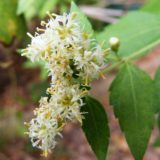Table of Contents
How to Identify Psychoactive Plants Near Me
Psychoactive Plant Identification Basics

Many people do not realize that there are psychoactive plants all around us. Most people think “psychedelic” when thinking about what plants are psychoactive. This is a common mistake, as the term psychedelic is more appropriately associated with hallucinogens. While hallucinogens may be psychoactive, they are a small fragment of the full population of psychoactive plants. Still, many people find themselves wondering “how to identify psychoactive plants near me.” Identifying psychoactive plants can be difficult, this is because sometimes they blend right in. It is possible, however, to identify psychoactive plants with a little knowledge and understanding of what makes them psychoactive.
How to Find Psychoactive Plants Near Me
With the use of some botany skills, one might become better at identifying psychoactive plants in their own geographical region of the world. Admittedly, however, many plants are so good at blending in with general foliage, it can still be a daunting skill to master (though possible)!
Understanding the Commonly Psychoactive Species
Although many of us typically perceive the world as though time began at her birth, the history of studying psychoactive plants can be traced back to the origin of botany itself. The first written records can be traced back to the father of botany, Theophratus who lived in 370-287 B.C.. Obviously it is possible that it was studied even before that, however, the point is many others throughout time have already done most of the leg work for shaman and interested parties of today.
Certain genera of plants typically produce the same types of effects. This is no surprise, as the species of a particular genus, contain similar chemical structures. In fact, many species within a genus even produce the same alkaloids and chemicals (just in different contents). Understanding that a certain genus of plants is commonly employed for similar effects, helps narrow down the hunt to find the right plant for the desired effect. One example can be found in the category of hallucinogens, where many species of nightshades can be exploited as hallucinogens. Similarly, hallucinogen-enthusiasts may look to a large variety of canary grasses, or datura plants to find their desired trip.
Determining the type of effect that one desires, helps greatly narrow down the types of plants one should be looking for.
Understanding the Psychoactive Parts of Plants

A true psychoactive plant enthusiast understands that not all of the plant is usually used to extract the desired alkaloids or chemicals. Although there are some instances where an entire plant can contain a particular alkaloid (or tryptamine), it is very common to have to exploit a particular part of the plan. Many times the psychoactive properties of plant can be found in the seeds, root, leaves, bark, fruit, stems, or resin when applicable. In many cases the content of a particular alkaloid or compound may be different in different parts of the plant. For example many DMT containing plants that contain DMT in multiple parts of the plant, may feature higher DMT content in the leaves rather than the seeds. These types of varying ratios and alkaloid or chemical contents per plant part differ greatly from plant to plant and from molecule to molecule.
The fruit of a plant, like many other parts of the plants themselves, can look extremely different from genus to genus and region to region, and even from species to species. Some plants produce obvious fruit, which is similar in color shape or form to that which is commonly found in the produce section of a grocery store. Other plants produce fruit which is less obvious and sometimes even extremely tiny. Berries, for example, can be so small that they are frequently overlooked and make identifying a particular psychoactive plant in an area harder. Understanding the size, color, form, and growing habits of a particular plant and its corresponding identifying features, make it much easier to find.
Take Note of the Season
A lot of people decide that they want to try and find a psychoactive plant in their area, and they take a picture of the plant with them to where it is supposed to grow. While this is a fantastic strategy, especially if one is in the correct region for the growth of the plant, a lot of amateur psychoactive plant hunters forget to take note of the season and additional growing habits of the plant. For example, one could be searching for a plant that blooms big beautiful white flowers, only to be walking right by it, not realizing that the flowers only bloom during the opposite season of the year. Other times plants are perennials or biannuals. Regardless, it is always wise to thoroughly understand what plant habits could make locating the plant harder.
Additionally, there are many instances where one species of a plant contains the psychoactive properties needed, but all of the other species lack the alkaloid. It is very easy to confuse two species of the same genus, especially if they look nearly the same. And while in some cases, both species could even contain the desired alkaloid, the quantity of the chemical could be different. There are many stories among Boy Scouts and Indians of people eating the wrong berries and getting gravely ill, all because they looked like commonly consumed food. Always remember to take note of the details.
Know How to Prepare or Administer a Plant

Even after someone has found a psychoactive plant in their area, there are many other factors to take into consideration in order to achieve any psychoactive effects from the plant. Some plants must be harvested during certain times. Some plants need to be prepared in certain ways (and it does not always have to be traditional). And most psychoactive effects absolutely require proper administration. In other words, the effects of a psychoactive plant may only be felt in some cases via oral ingestion, while in other cases, via inhalation. Understanding how a particular alkaloid or chemical’s psychoactive properties are activated, means a great deal. THC, the cannabinoid found in Marijuana, is activated at a higher temperature, thus it is frequently smoked or vaporized. However, when it is properly cooked, it can be orally ingested. People who try to eat their marijuana without cooking it (the dry herb itself), are always discontent afterwards to find they have merely ingested inactive THC, which will never provide any psychoactive effects inactivated.
Final Tips: Locating Plants Near You That Are Psychoactive
It can be difficult to locate a psychoactive plant if one does not fully understand what they are looking for. There are so many factors in actually locating a psychoactive plant that most newbies failed to take into account. Even after a plant has been found, there are still so many factors which contribute to successful use of the psychoactive properties. All in all, it does not require much research to fully investigate any one particular species, and it is more than worth it to pursue a psychoactive plant one knows for sure exists in an area at a particular time, rather than guessing.
Looking for a particular effect or use? Try browsing the rest of our articles or using the search bar to find a particular effect or alkaloid.




